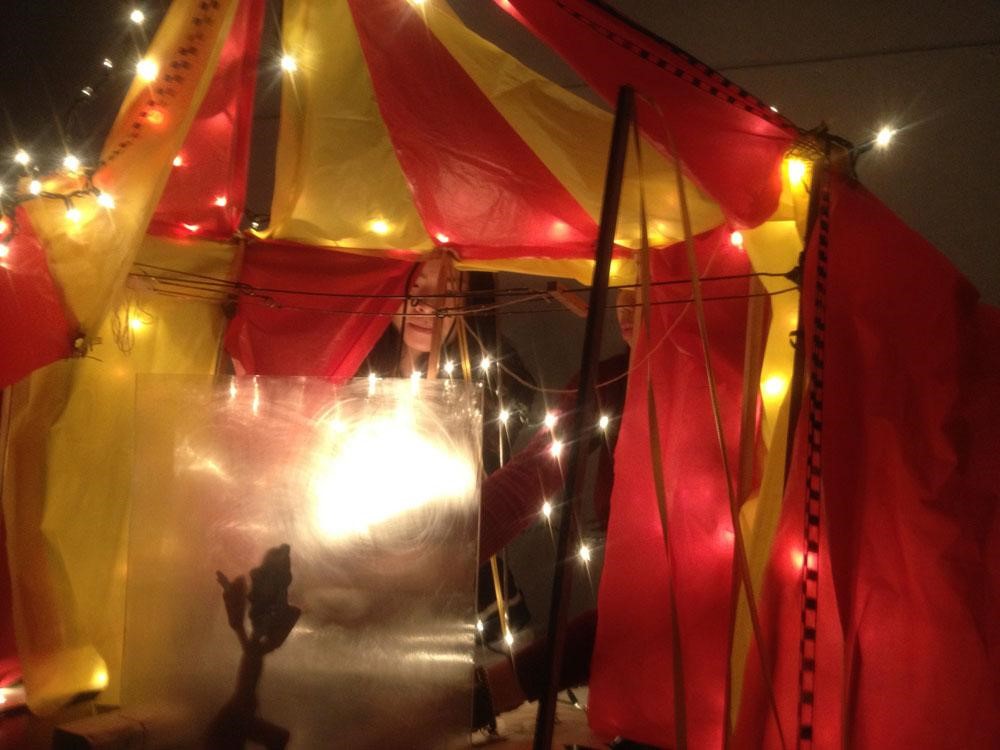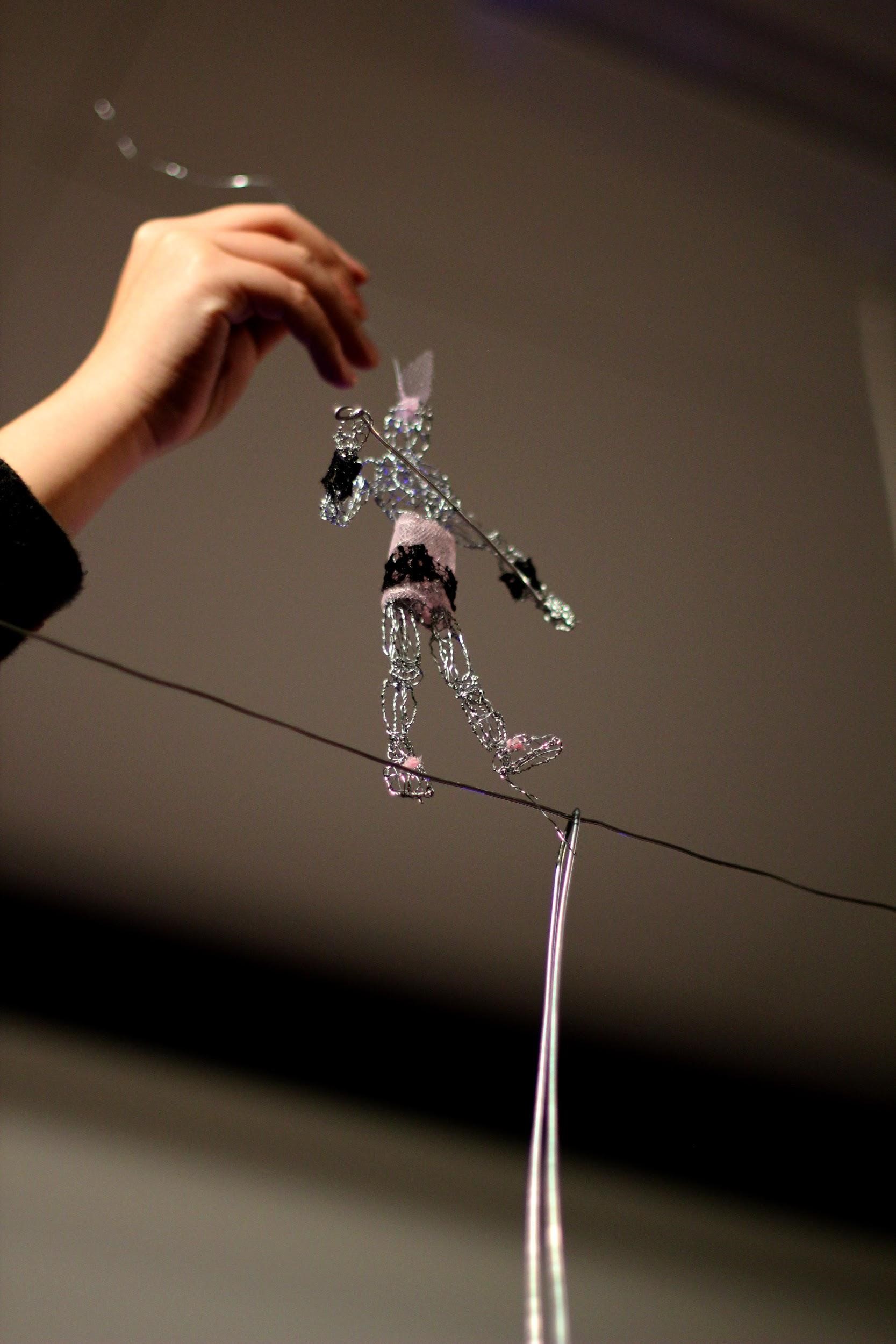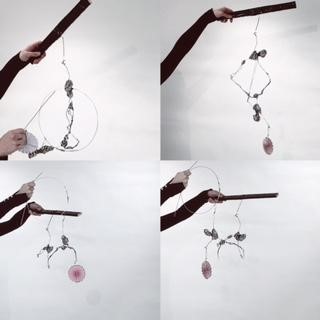In Integrative Studio 1, students explore a range of visual, analytical, and making skills while working on projects that are collaborative and cross-disciplinary. The questions that underpin the learning process are: How do we make sense of our ideas, the information we collect, and our hunches and theories? What can this inquiry tell us about why we make certain decisions as creative thinkers?
Integrative Studio 1 integrates learning from other first year courses, especially in thematic links to Integrative Seminar 1.
The Studio as Circus
In Alexander Calder-esque fashion, two of Derek Haffar’s Integrative 1 Studios created and staged their own circuses. In this year’s iteration of the Integratives circus, students worked collaboratively to design characters, write scripts, and perform the event for live audiences. Students were asked to work with pedestrian materials so as to maintain Calder’s aesthetic.
The Magic of Collaboration
Polina Budilina, who captured much of the event’s magic, explains, “The circus was an eye-opening experience. I didn’t even think it would be possible to make basic wire sculptures come to life. This project made all of us come up with solutions that we would not usually think of.”

Studio students prepare for characters’ live performances beneath the big tent.

Zoey Sun’s circus aerialist, photo by Polina Budilina
Yasemin Varlik’s Aerialists
First year student Yasemin Varlik created aerialists for the group circus. She reflects, “The character making process for this circus was very different from other projects because these characters had to be moving figures. The figures had to somehow come into contact with each other and swing from the same rope.
“After brainstorming, I had the idea of using magnets with divergent strengths to make the lady figure somehow let go of her own rope and attach to the man via the strong magnets on her feet.”
Yasemin remembers, “Performing with the aerialists for a live audience was very stressful because I knew that if one little move went wrong the whole show would be over. I definitely learned new techniques that I didn’t know existed. Also, I was able to fully understand the problem solving process throughout the semester. I came up against many obstacles but was able to find a solution.”
In the corresponding Seminar class, Professor Megan Healey asked students to draw connections between their research and their Studio circus project.
First year student Serra Turkun wrote about the connections between her Studio lion sculpture and her Seminar research:
Choosing similar topics for two of my classes actually helped me a lot because I conducted detailed research which allowed me to create my lion figure. More importantly, it changed my point of view. If I hadn’t chosen my research topic about the circus animals, I wouldn’t have known how bad their conditions are in the circuses and how they suffer during the performances. And because I learned about those conditions, I didn’t make a lion and a tamer with his whip. I wanted to create a lion playing with his ball just for fun, without any harm.


Sumin Kang’s aerialists, photo by Polina Budilina
Stepping into the history of Calder’s Circus, these first year students created a world of spectacle and wonder through found objects and teamwork, inviting us all to experience a little bit of magic.


























